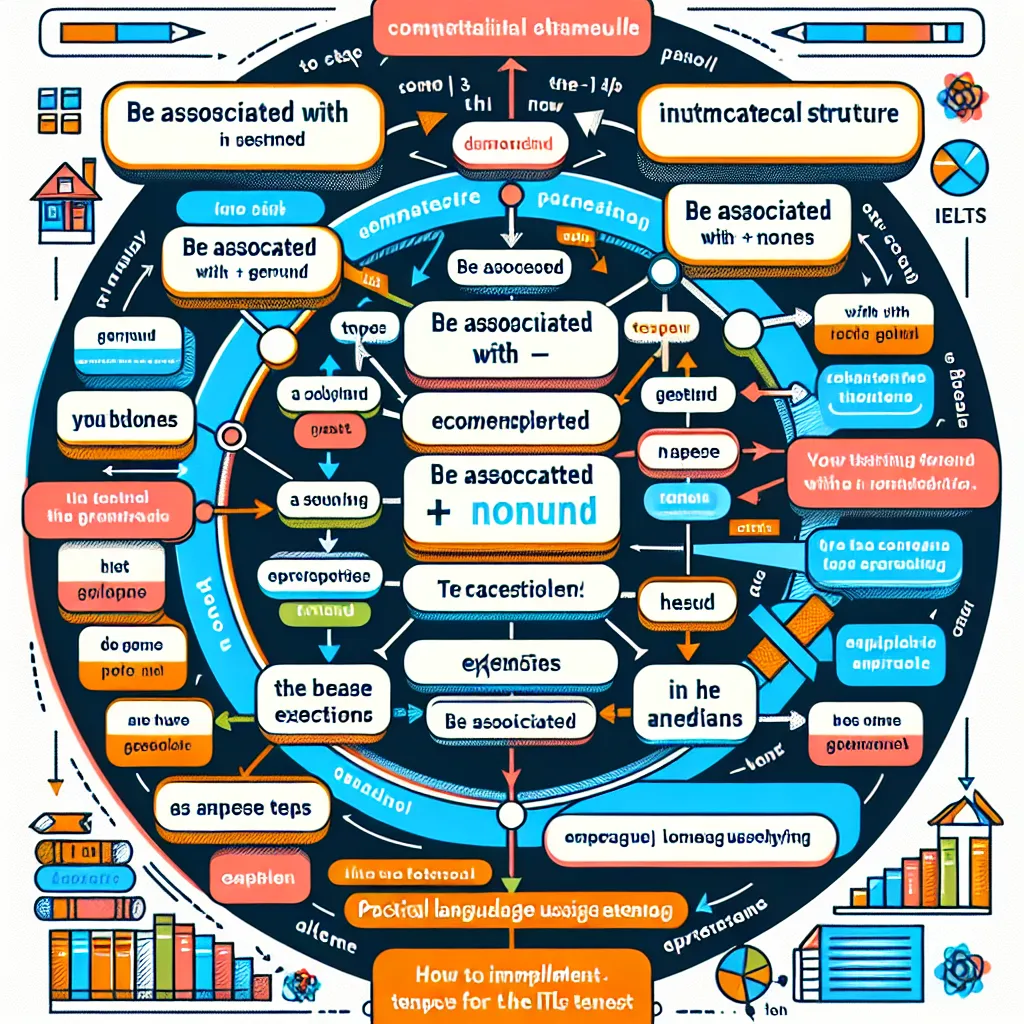The phrase “be associated with + noun/gerund” is a crucial grammatical structure that frequently appears in IELTS exams. Understanding its usage can significantly enhance your performance across all sections of the test. Let’s delve into this structure and explore how to effectively apply it in your IELTS preparation.
Examples:
- The city is associated with high-tech industries.
- His name is often associated with environmental activism.
- The company is associated with producing luxury goods.
- That university is associated with groundbreaking research.
- The brand is associated with promoting sustainable fashion.
In these examples, we can see how the structure links subjects with various concepts, activities, or characteristics. This versatility makes it a valuable tool for expressing complex ideas in both writing and speaking tasks.
Understanding “Be Associated With + Noun/Gerund”
Meaning and Frequency in IELTS
The phrase “be associated with” essentially means to be connected or related to something. It’s commonly used to express relationships between ideas, concepts, or entities. In IELTS, this structure appears frequently, especially in Reading and Listening tasks, and can be effectively used in Writing and Speaking to demonstrate a sophisticated grasp of English.
Grammatical Formula and Usage
The basic formula is:
[Subject] + [be verb] + associated with + [noun/gerund]
This structure can be used in various tenses and forms:
- Present: is/are associated with
- Past: was/were associated with
- Present Perfect: has/have been associated with
- Future: will be associated with

Applying “Be Associated With” in IELTS Tasks
Writing Task 2
In IELTS Writing Task 2, using this structure can help you express complex ideas more clearly. For example:
“In many countries, fast food is associated with obesity and health problems. However, it’s important to note that this association is not necessarily causal.”
This sentence demonstrates a sophisticated understanding of the topic and uses the structure to present a nuanced argument.
Speaking Part 3
In the Speaking test, particularly in Part 3 where more abstract topics are discussed, this phrase can be very useful:
“In my country, success is often associated with financial wealth, but I believe true success should be associated with personal fulfillment and contributing to society.”
Using this structure twice in the same response shows a high level of language proficiency and the ability to compare and contrast ideas.
Reading and Listening
In Reading and Listening tasks, recognizing this structure can help you quickly identify key relationships between ideas. For example, you might encounter a sentence like:
“The decline in bee populations has been associated with the increased use of pesticides.”
Understanding this structure helps you grasp the main idea more efficiently.
Advanced Usage for Higher Band Scores
To aim for higher band scores (7+), consider these advanced applications:
-
Use with abstract nouns:
“The artist’s work is associated with the concept of transience.” -
Combine with other complex structures:
“Despite initially being associated with luxury, the brand has recently been working to be associated with sustainability and ethical production.” -
Use in passive constructions:
“Certain behavioral traits are often associated with leadership potential.” -
Incorporate into conditional sentences:
“If the company continues to be associated with environmental damage, it may face serious consequences.”
Common Mistakes to Avoid
-
Incorrect preposition: “associated to” instead of “associated with”
Incorrect: The product is associated to high quality.
Correct: The product is associated with high quality. -
Using an adjective instead of a noun/gerund:
Incorrect: The brand is associated with expensive.
Correct: The brand is associated with expensiveness. -
Forgetting the ‘be’ verb:
Incorrect: This symbol associated with peace.
Correct: This symbol is associated with peace. -
Using in place of simpler structures when not necessary:
Verbose: He is associated with being tall.
Better: He is tall.
Conclusion
Mastering the “be associated with + noun/gerund” structure can significantly enhance your IELTS performance. It allows for nuanced expression of relationships and ideas, which is crucial for achieving higher band scores. Practice using this structure in various contexts, and be prepared to encounter it in all sections of the IELTS test. Remember to use it judiciously and naturally in your responses to showcase your language proficiency effectively.
For further practice, try incorporating this structure into essays on topics like technology’s impact on society, cultural changes, or environmental issues – all common themes in IELTS exams where this phrase can be particularly useful.